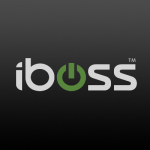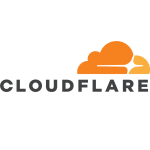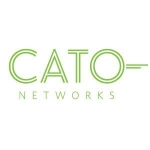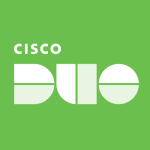What is our primary use case?
I had an agreement with OpenDNS which was the original owner of the solution, and I was selling it as an MSP. In Spain, I offer it to a company called Ares Capital. At the start, it was designed to filter URLs for sites that management didn't want the people to access, such as adult sites and social media sites that may cause a loss of work time. A few years later, the solution introduced the ability to filter malware sites. We used that not as an accessory characteristic, but as the main characteristic. We moved from filtering unwanted sites to filtering malware and virus-infected sites. We still use some filtering for unwanted sites, but mostly for security reasons.
How has it helped my organization?
Cisco Umbrella was designed to allow hybrid work. When the COVID pandemic started, we didn't have to do anything at all because the computers were already set up for remote work. With Cisco, it doesn't matter where the computer is as long as the computer is using the DNS servers that Cisco Umbrella works with. If it's part of a laptop or wherever you are in the world, it works exactly the same as being in the office.
It is very important the solution provides a single pane of glass management for our organization in order to help manage the complex software and programs that companies use. This saves a lot of time for managers.
The single pane of glass management optimizes the user experience by allowing the user to access restricted sites much faster and easier from a centralized location.
Cisco Umbrella helps us remediate threats quickly. The solution doesn't work with our internal network, it instead works with the DNS servers that are located all around the world. This means Cisco Umbrella doesn't have any effect on our network whatsoever. In fact, Cisco Umbrella is totally different from other solutions that are locally based, which filter on routers or firewalls. The solution acts as an outside firewall. The rules that are set up on the Cisco Umbrella management site affect the connection between the computers everywhere, but it doesn't slow them down.
The employee morale has improved with Cisco Umbrella because they don't need to be as cautious when visiting sites knowing that the solution is taking care of their security for them. The only thing that could happen to an employee is that they may need to access a site that is blocked and they have to report that blocked site. When a site is blocked for an employee, a page appears on their computer and they can report that blocked site from there. The employee can send the administrator a direct message requesting access. A blocked site occurs infrequently and the administrator can unblock the site quickly.
What is most valuable?
The most valuable feature is the ability to filter malware sites that could infect clients or allow them to download infected files.
Cisco Umbrella is one of the best solutions in the market because it's very simple to use and very simple to set up. We require some knowledge of filtering rules, but it doesn't take that long to get familiarized with them. We can manage all the working locations, even if they are far away from a single point and the solution is easy to use. The vendor is a pioneer in the central management of security compared to other antivirus companies.
Cisco Umbrella provides a single pane of glass management.
Cisco Umbrella doesn't slow the network down because it filters outside of the network.
Cisco Umbrella is not a solution that we can rely on for everything, but for the cost, it is a valued layer of defense that we can depend on. Cisco Umbrella's resilience complements any antivirus solution well. The main advantage of Cisco Umbrella is that it stops attacks from happening before they reach the antivirus solution.
Cybersecurity resilience is important to our organization because we provide software-driven services. We need to contact people from all over the world, We need to be able to navigate through many different sites safely. This gives peace of mind to our customers. We visit thousands of websites every year and it is important to have a solution that takes into account that we are not visiting the same websites repeatedly.
What needs improvement?
The rule-making process for blocking sites or for blocking characteristics can use some simplification. For example, types of malware. This would make it easier to use because it has a learning curve.
There is a possibility of creating users that have explicit permissions to access sites that nobody else should access. This process can be cumbersome and it would be helpful if there was an easier way to create users and assign roles to special users.
Cisco could ease the process of defining the number of licenses and the price considering the number of licenses we require. Currently, we have to get a quote for anything over 100 licenses.
For how long have I used the solution?
I have been using the solution for ten years. Before the solution was acquired by Cisco it was OpenDNS Enterprise.
What do I think about the stability of the solution?
The solution is extremely stable.
Maintaining network connectivity is very easy. We have not had any downtime in over 10 years. Cisco Umbrella doesn't work directly through the network. It works with the DNS servers that are outside of the network. The network itself doesn't affect it at all. Cisco Umbrella doesn't affect the internal workings, hardware, software, switches, or routers. As long as we have set up the DNS correctly in the computers, either locally or through Active Directory, everything works no matter what happens with our network.
What do I think about the scalability of the solution?
The solution is scalable. We started off with around 40 computers and now have over 200.
How are customer service and support?
I contacted technical support two or three times by email because I had doubts about a rule, but it was pretty straightforward. They responded back within 24 hours. I'm not sure if we can contact them now by phone because I have only used the email method.
How would you rate customer service and support?
Which solution did I use previously and why did I switch?
Previously, we were using an antivirus company for antiviral protection. The problem with antivirus is that it's reactive. It does not proactively avoid infection. Cisco Umbrella is proactive because it blocks sites before we may get an infection. We don't react to infections; we proactively avoid infections. Although there are solutions now that do the same, Cisco Umbrella was the first to market.
How was the initial setup?
The initial setup is straightforward and only required one person. Setting up the solution usually takes between 30 minutes to an hour. However, the rules are always changing, so we never truly finish setting it up. We're always changing the configuration of the sites by blocking or allowing or adding new sites to the blacklist or whitelist.
To change the local DNS settings to use the Cisco Umbrella service, we only need to make a few changes. If the computers are connected to Active Directory, we can deploy the configuration through Active Directory so we don't have to mess with anything else. The solution is based on the cloud, so we get a lot of detail and granularity in what sites the computers can access. However, if we want more detail, we can install a small agent on the computer so they can report to the servers.
What about the implementation team?
The implementation was completed in-house.
What was our ROI?
We have definitely seen a return on investment given the low cost of the solution.
What's my experience with pricing, setup cost, and licensing?
Cisco has a set price for a single license up to 100, but whenever we get over 100, we have to ask for a quote. Sometimes requesting quotes makes the process a little harder because people's trust waivers when having to ask for quotes. We want to see the prices upfront.
What other advice do I have?
I give the solution a nine out of ten.
The solution is very good, one of the best in the market because it is so easy to use and so easy to manage even from far away distances. The company has four locations, one in Madrid, one in Valencia, another in Alicante, and one in Barcelona. The solution allows me to manage all the sites from one location easily.
Given the rise in attacks and virus infections all over the world recently, it is important to have layers of security. The less intrusive solutions are better for us. I believe that Cisco Umbrella is a solution that everybody should have because the solution is easy to set up and manage. Cisco Umbrella gives us peace of mind, which is why I believe it is a great solution. I had problems in Spain when I tried to set up Cisco Umbrella for other companies but this was because people didn't know about the solution or trust it as much as they should.
Initially, we implemented the solution for the central branch in Madrid, and after that, we implemented it in the regional branches. We then differentiated between departments, and in the end, we were managing departments and offices.
Which deployment model are you using for this solution?
Public Cloud
If public cloud, private cloud, or hybrid cloud, which cloud provider do you use?
Other
Disclosure: My company has a business relationship with this vendor other than being a customer. MSP



















